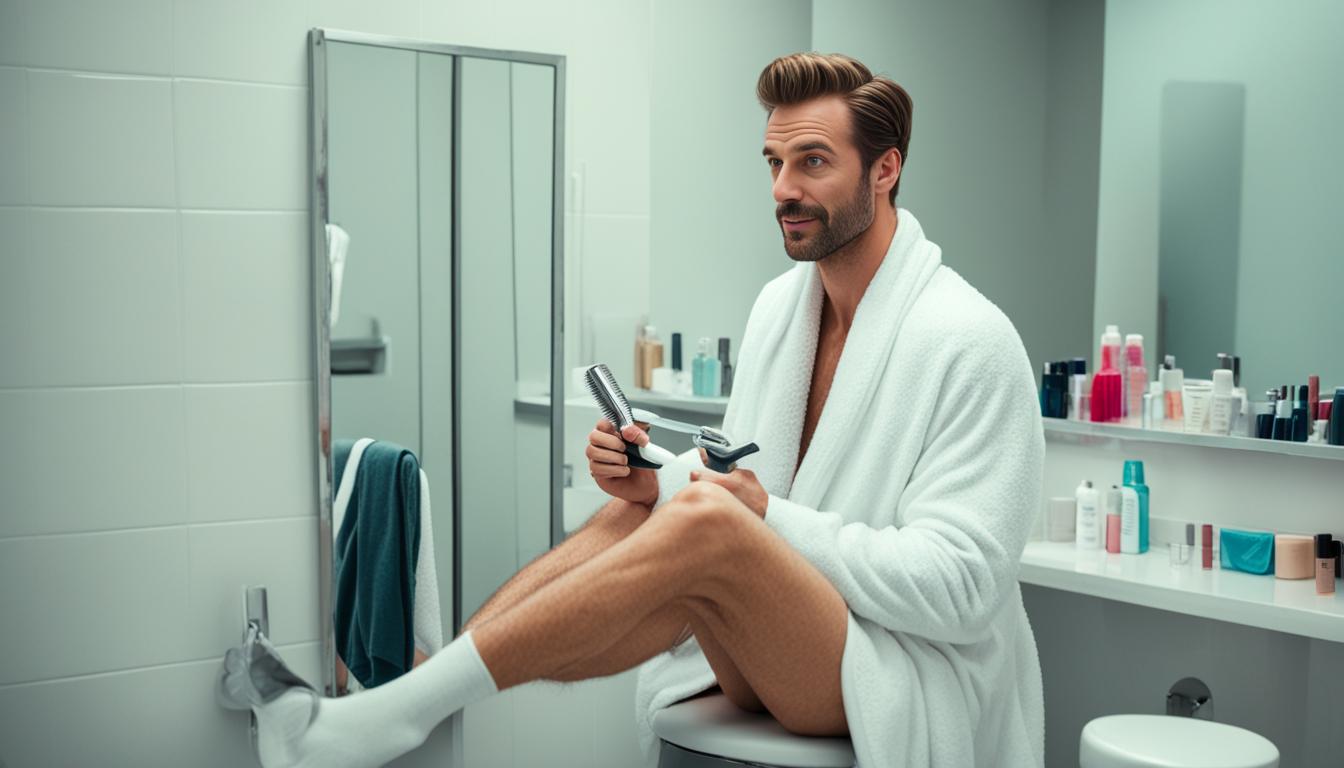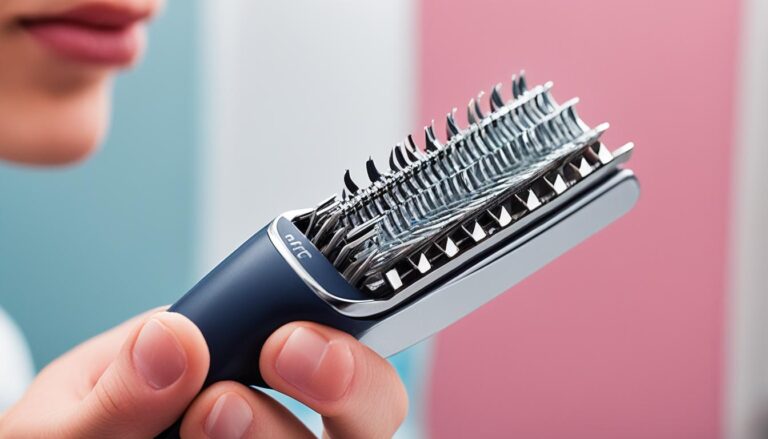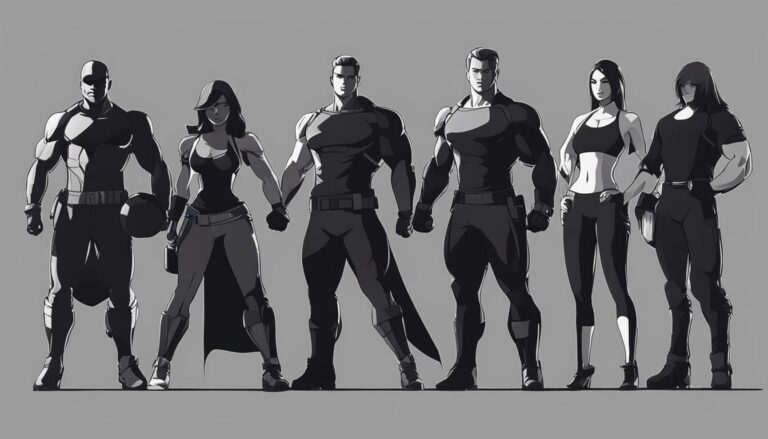At What Age Should You Remove Pubic Hair?
The appropriate age for pubic hair removal is a common concern among parents and individuals. While there is no specific age that is considered universally appropriate, experts suggest that it depends on individual factors such as the child’s physical development, cultural norms, and personal preferences.
Dermatologists recommend that shaving or waxing should be introduced when puberty is attained, which typically starts around 11 to 14 years for girls and 12 years and above for boys. However, the decision to remove pubic hair should be based on open communication between parents and their children, taking into account factors like self-esteem, body positivity, and personal comfort.
It’s important to educate children about proper grooming practices and the potential risks associated with premature or harsh hair removal methods.
Key Takeaways:
- The appropriate age for pubic hair removal varies based on individual factors such as physical development and cultural norms.
- Dermatologists recommend introducing shaving or waxing around the onset of puberty.
- The decision to remove pubic hair should be based on open communication and taking into account factors like self-esteem and personal comfort.
- Educate children about proper grooming practices and the potential risks associated with premature or harsh hair removal methods.
- Support children in making informed decisions about their bodies and promote self-acceptance and confidence.
When Should You Say Yes to a Shaving Request?
As a parent, considering a shaving request from your child can be a meaningful and important decision. Giving permission to shave involves thoughtful consideration and parental consent for pubic hair removal. When is it okay for kids to shave? The answer lies in understanding your child’s unique circumstances and readiness.
One key factor to consider is if your child is showing signs of body hair growth. Puberty brings about hormonal changes that lead to the development of hair in new areas, including the pubic region. If your child expresses self-consciousness about their hair or is being teased or bullied, allowing them to start shaving may help boost their confidence and alleviate any discomfort they may feel. Open and honest discussions with your child about their reasons for wanting to shave are essential to assess their emotional well-being and make an informed decision together.
It’s important to provide guidance on proper shaving techniques and safety precautions to ensure a safe and effective experience. Teaching your child the correct way to shave can help prevent potential nicks, cuts, and skin irritation. Additionally, discussing the potential changes in hair texture and growth after shaving can help manage expectations.
“Allowing your child to start shaving should be based on their individual circumstances and readiness.”
Remember, every child is unique, and there is no one-size-fits-all answer to when they should start shaving. By considering their emotions, maturity, and physical development, you can make a decision that feels right for both of you. Providing parental consent and support in their journey towards hair removal can foster positive communication and empower your child to make decisions that align with their values and comfort levels.
Potential Risks of Hair Removal at a Young Age
Dermatologists warn of the potential risks associated with premature hair removal practices, such as shaving or waxing, especially when performed at a young age. It is crucial to educate children about these risks and encourage them to take proper care of their skin to minimize potential complications.
Consequences of Early Hair Removal
Early hair removal can lead to various consequences and complications, including:
- Irritation: Shaving or waxing can cause skin irritation, redness, and discomfort, particularly in individuals with sensitive skin.
- Ingrown Hairs: Improper hair removal techniques can result in ingrown hairs, where the hair curls and grows back into the skin, leading to inflammation and potential infection.
- Folliculitis: Hair follicles can become infected and inflamed, causing folliculitis. This condition may result in red bumps, pain, and itching.
- Pseudofolliculitis: Frequent shaving can cause pseudofolliculitis, also known as razor bumps. This condition occurs when the hair grows back into the skin, causing inflammation, itching, and sometimes scarring.
- Thinning of the Skin: Over time, repetitive shaving or waxing can lead to thinning of the skin, making it more prone to injury and skin irritation.
- Dryness: Shaving can strip the skin of its natural oils, leading to dryness and potential discomfort.
It is essential to understand and communicate these potential risks to children to help them make informed decisions about their hair removal practices. Teaching them proper techniques and emphasizing skin care can help minimize the chances of complications.
| Risks of Premature Hair Removal | Consequences of Early Hair Removal |
|---|---|
| Irritation | Irritation |
| Ingrown Hairs | Ingrown Hairs |
| Folliculitis | Folliculitis |
| Pseudofolliculitis | Pseudofolliculitis |
| Thinning of the Skin | Thinning of the Skin |
| Dryness | – |
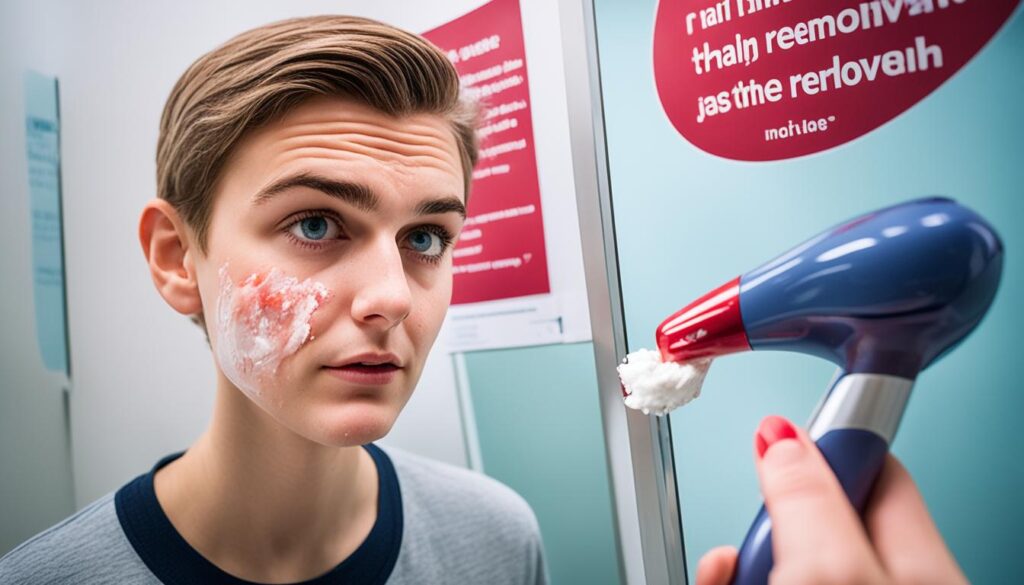
By understanding the potential risks and complications associated with premature hair removal, parents and individuals can make more informed decisions and take appropriate measures to ensure safe and effective hair removal practices.
Factors to Consider for Pubic Hair Removal
When making the decision about pubic hair removal, it is important to take into account various factors that can influence this personal choice. To ensure that the decision is well-informed and aligned with individual needs and preferences, the following considerations should be taken into consideration:
- Physical Development: Assessing the child’s physical development is crucial to determine if they have reached puberty and if their body is ready for hair removal. It is generally recommended to consider hair removal methods when the child starts experiencing noticeable hair growth in the pubic area.
- Emotional Readiness: Understanding the child’s emotional readiness is vital. Engaging in open and non-judgmental conversations can help parents gauge their child’s level of comfort, self-esteem, and body image. It is important to ensure that the child feels empowered and confident in making decisions regarding their own bodies.
- Cultural Norms and Societal Expectations: Culture and societal expectations can significantly influence one’s perspective on pubic hair removal. Different cultures may have different views and norms regarding body hair. It’s important to consider these factors and guide children to make decisions that align with their cultural background while considering personal comfort.
- Personal Preferences: Each individual has their own preferences when it comes to body hair removal. Some may prefer a completely hair-free look, while others may choose to leave some hair or opt for trimming. Encouraging children to understand their own preferences and make choices that make them feel comfortable and confident is essential.
- Individual Experiences: Personal experiences with pubic hair, such as discomfort or irritation, may contribute to the decision-making process. It’s important to address any concerns or past negative experiences and guide children to explore suitable hair removal methods that minimize potential risks and maximize comfort.
Having open, non-judgmental conversations with children about the factors mentioned above can help them make informed decisions about pubic hair removal. It is crucial to provide guidance, support their choices, and promote body positivity and self-acceptance. By considering these various factors, parents can help their children navigate the decision-making process and ensure their overall well-being.
Personal Testimonial:
“As a parent, I understand the importance of considering multiple factors when it comes to my child’s decisions about pubic hair removal. By engaging in open and supportive conversations, I aim to guide my child in making choices that align with their physical and emotional well-being, cultural background, and personal preferences. Ultimately, I want to empower them to embrace their own bodies and feel confident in the choices they make.”
Comparison of Different Hair Removal Methods
| Method | Pros | Cons |
|---|---|---|
| Shaving | – Quick and affordable – Can be done at home – Temporary results |
– Risk of cuts and irritation – Hair grows back quickly – Requires constant maintenance |
| Waxing | – Longer-lasting results – Hair grows back finer – Removes hair from the root |
– Can be painful – Requires professional assistance or skill – Potential for skin irritation |
| Laser Hair Removal | – Permanent reduction in hair growth – Less frequent treatments – Precision targeting |
– Expensive – Requires multiple sessions – Not everyone is a suitable candidate |
Parental Guidance and Support
As parents, it is crucial to provide guidance and support to children who are interested in pubic hair removal. By creating an open and non-judgmental environment, we can help our children navigate this aspect of their grooming routine. Along with discussing the pros and cons of hair removal, it is important to educate them about proper techniques, safety precautions, and potential changes in hair texture.
We should encourage our children to express their concerns, questions, and preferences regarding hair removal. By listening attentively and addressing their needs, we can support their decision-making process and foster a culture of body positivity, self-acceptance, and personal choice.
Educating Children about Hair Removal
When it comes to educating our children about hair removal, we need to strike a balance between providing factual information and allowing them to form their own opinions. By offering accurate and age-appropriate explanations, we can empower them to make informed decisions.
Parental guidance is crucial in helping children make informed decisions about hair removal. By educating them about the methods, risks, and benefits, we can support their journey towards self-care and personal grooming.
Here are some key points to consider during the conversation:
- Method Options: Explain the different hair removal methods available, including shaving, waxing, and using hair removal creams. Discuss the pros and cons of each method, considering factors such as effectiveness, pain level, and potential risks.
- Safety Precautions: Emphasize the importance of proper hygiene and safety measures during hair removal. Teach them about using clean and sterilized tools, following instructions carefully, and avoiding harsh chemicals that may cause irritation or allergic reactions.
- Changes in Hair Texture: Inform them about the potential changes in hair texture after removal, such as hair growing back coarser or thicker. Assure them that these changes are temporary and part of the natural hair growth cycle.
By providing this guidance and support, we can equip our children with the knowledge and confidence to navigate hair removal safely and effectively.
| Benefits | Risks |
|---|---|
| Enhanced self-confidence and body positivity | Potential for skin irritation and redness |
| Increased personal hygiene | Possible ingrown hairs or folliculitis |
| Comfort and reduced self-consciousness | Risk of cuts or nicks during shaving |
Tips for Safe and Effective Hair Removal
To ensure safe and effective hair removal, it’s important to follow proper techniques and practices. Here are some essential tips:
- Prepare your skin: Before hair removal, make sure you clean and exfoliate the area to remove any dirt, oil, or dead skin cells. This helps prevent irritation and ensures a smooth and close shave.
- Choose the right tools: Whether you prefer shaving or waxing, use high-quality razors or waxing kits specifically designed for hair removal. Dull razors can cause cuts and irritation, while low-quality wax can lead to ineffective hair removal.
- Shaving techniques: For safe shaving, always use a sharp razor and shave in the direction of hair growth to reduce the risk of ingrown hairs. Remember to apply shaving cream or gel to provide lubrication and minimize friction.
- Waxing techniques: If you opt for waxing, ensure your hair is at least a quarter-inch long for effective removal. Apply the wax in the direction of hair growth and remove it quickly in the opposite direction, holding the skin taut to minimize discomfort.
- Moisturize after hair removal: After shaving or waxing, apply a gentle moisturizer to soothe the skin and prevent dryness. Look for products that are non-comedogenic and fragrance-free to avoid irritation.
- Post-hair removal care: Avoid excessive sun exposure, hot showers, and harsh chemicals immediately after hair removal to prevent further irritation. Additionally, avoid scratching or picking at the skin to minimize the risk of infection.
Remember, hair removal is a personal choice, and it’s essential to choose the method that works best for you. Consult with a dermatologist if you have any concerns or questions regarding safe hair removal practices.
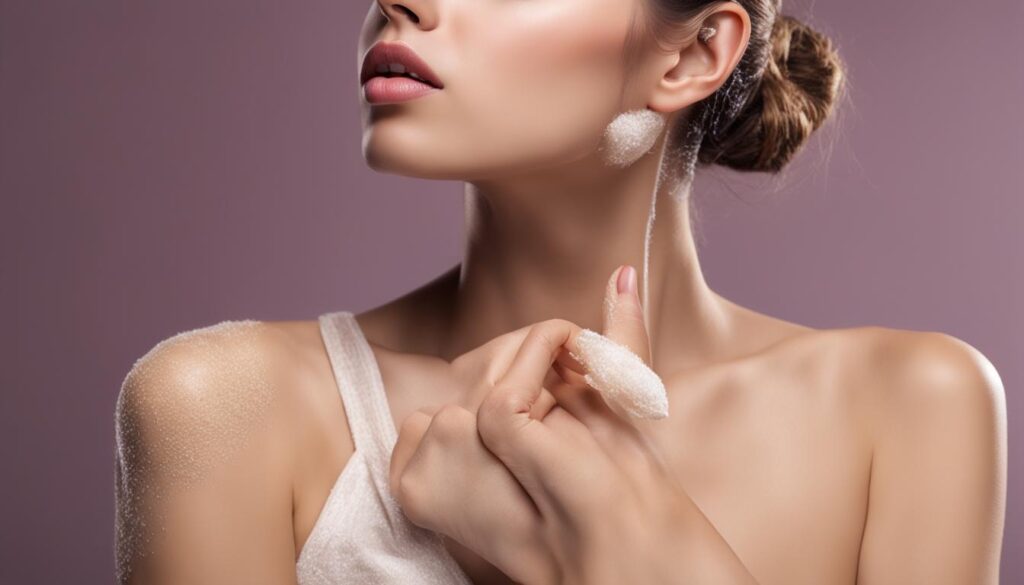
Conclusion
The appropriate age for pubic hair removal is a personal decision that depends on individual factors such as physical development, cultural norms, and personal preferences. While there are no specific guidelines, dermatologists recommend introducing shaving or waxing around the onset of puberty. However, it is crucial to make this decision through open communication, considering the child’s emotional well-being, and promoting body positivity. Parents should provide guidance, support, and education on safe and effective hair removal practices to ensure their child’s well-being.
By fostering open and non-judgmental conversations, parents can empower their children to make informed decisions about their own bodies. It is important to teach them about proper grooming practices, safety precautions, and potential risks associated with premature or harsh hair removal methods. Additionally, emphasizing body positivity, self-acceptance, and personal choice will help children develop a healthy relationship with their bodies and promote confidence and self-esteem.
Remember, the goal of pubic hair removal is not to conform to societal pressures or beauty standards but to support individual choices and enhance personal comfort. By providing guidance and creating a safe space for open dialogue, parents can help their children navigate the complexities of pubic hair removal, promoting self-acceptance and body positivity along the way.
FAQ
At what age should you remove pubic hair?
The appropriate age for pubic hair removal is a personal decision that depends on individual factors such as physical development, cultural norms, and personal preferences. While there are no specific guidelines, dermatologists recommend introducing shaving or waxing around the onset of puberty.
When should you say yes to a shaving request?
Experts suggest that parents should consider saying yes to a shaving request when their child shows signs of body hair growth, expresses self-consciousness about their hair, or is being teased or bullied. It is important to have open and honest discussions with the child to understand their reasons for wanting to shave and to assess their emotional well-being.
What are the potential risks of hair removal at a young age?
Dermatologists highlight several potential risks associated with premature hair removal practices, such as shaving or waxing. These include irritation, redness, ingrown hairs, folliculitis (inflammation of hair follicles), and the possibility of developing pseudofolliculitis or razor bumps. Wax-induced follicular infection is common among individuals with sensitive skin.
What factors should be considered for pubic hair removal?
When deciding on pubic hair removal, it is essential to consider several factors. These may include the child’s physical development, emotional readiness, cultural norms, societal expectations, personal preferences, and individual experiences. Parents should have open and non-judgmental conversations with their children to understand their reasons for wanting to remove pubic hair and to guide them towards making informed decisions.
How can parents provide guidance and support for pubic hair removal?
As parents, it is crucial to provide guidance and support to children who are interested in pubic hair removal. This includes discussing the pros and cons of hair removal, educating them about proper techniques, safety precautions, and potential changes in hair texture. Parents should also create an open and non-judgmental environment where children feel comfortable expressing their concerns, questions, and preferences.
What are some tips for safe and effective hair removal?
To ensure safe and effective hair removal, dermatologists and experts recommend the following tips:
1. Use a clean and sharp razor to minimize irritation and the risk of cuts.
2. Wet the skin and hair before shaving to soften the hair.
3. Apply a shaving gel or cream to create a smooth surface.
4. Shave in the direction of hair growth to prevent ingrown hairs.
5. Rinse the razor blade frequently to remove hair buildup.
6. Moisturize the skin after shaving to prevent dryness.
7. Avoid sharing razors or other hair removal tools to prevent the spread of bacteria or infections.
What is the conclusion regarding pubic hair removal?
The appropriate age for pubic hair removal varies depending on individual factors, and there is no one-size-fits-all answer. It is important for parents to have open and non-judgmental conversations with their children, considering their emotional well-being and promoting body positivity. The decision to remove pubic hair should be based on personal preferences, cultural norms, and individual experiences. The ultimate goal is to empower children to make informed decisions about their own bodies and promote self-acceptance and confidence.
